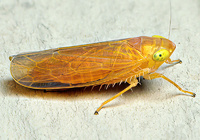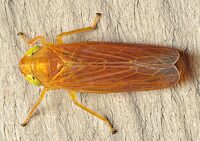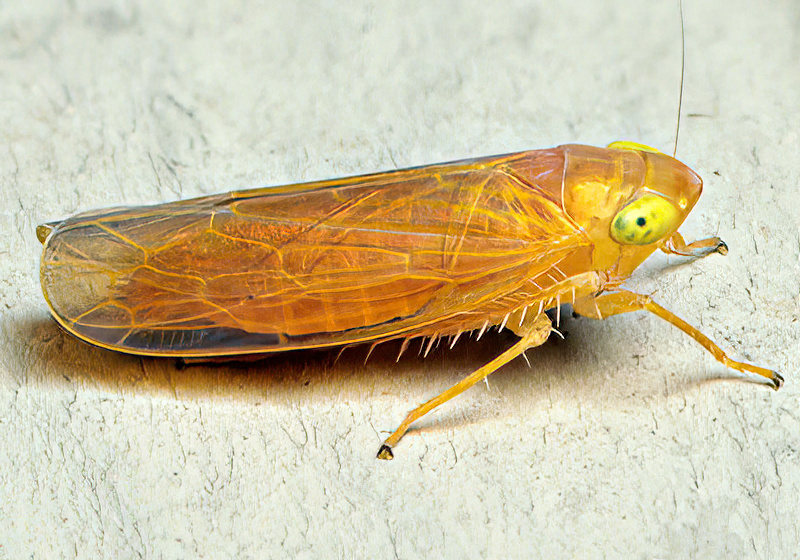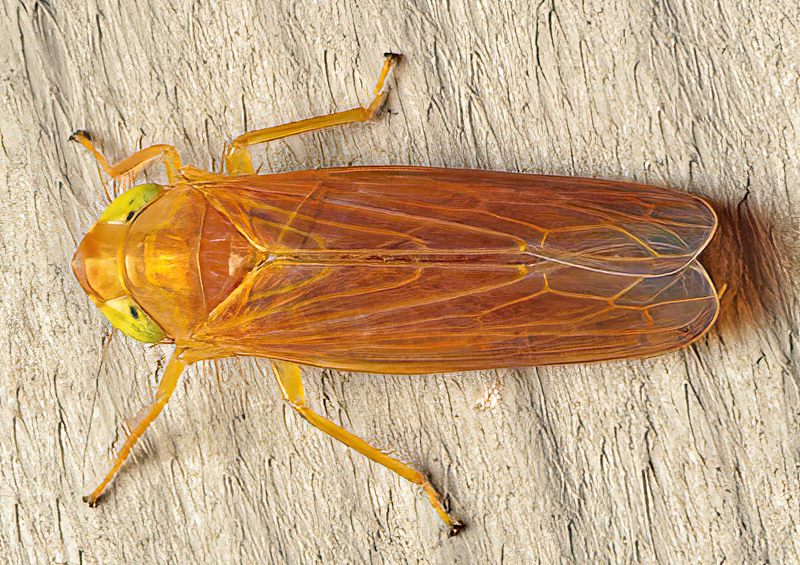
|
|
|
| synonym |
|
| description |
This species is distinct in color with sexually dimorphic coloration: males are a deep uniform orange while females are milk white without definite color markings. The vertex is bluntly angled, 1/3 to 1/2 wider between the eyes than in the middle. The female pregenital sternite is twice as broad as it is long, with the posterior margin excavated half way to the anterior base with a broad triangular notch, which is interrupted in the middle on either side with rounded lobes; this gives the appearance of three distinct notches. The male genital plates are longer than broad, with rounded tips that diverge slightly from one another. Adults are 5.0-5.5 mm long. (DeLong 1941), (DeLong 1948)
For diagrams of this species, see: 3I. For images of this species, see: BG. |
| distribution |
Eastern United States (3I) |
| abundance |
Reported from the state, but it is unclear from where exactly. |
| seasonal_occurrence | |
| habitat |
Moist areas where the host plant grows. |
| plant associates |
Cane/native bamboo (Arundinaria tecta) |
| behavior |
Can be attracted at night with a light. |
| comments |
NOTE: Arundanus is a genus that consists of a number of species that look like one another. It is therefore important to get a clear, detailed picture of the underside to determine species identification. |
status |
[Native:]
[Introduced:]
[Extirpated:] | | list_type |
[Official:]
[Provisional:] |
| adult_id | Unmistakable and widely known Identifiable from good quality photos of unworn specimens
Identifiable from photos showing undersides, or other specialized views [e.g., legs, face]
Identifiable only by close inspection of structural features or by DNA analysis NULL |
| nymph_id | Unmistakable and widely known Identifiable from good quality photos, especially where associated with known host plants
Identifiable from close inspection of specimens or by DNA analysis
Identifiable only through rearing to adulthood NULL |
| G_rank |
|
| S_rank |
|
| rank_comments |
|
| tribe |
Deltocephalini |
| subgenus |
|
Species Photo Gallery for Arundanus nacreosus No Common Name |
 | Photo by: Ken Childs
Out Of State Co.
Comment: |  | Photo by: Ken Childs
Out Of State Co.
Comment: |
|

 »
»


 »
»
